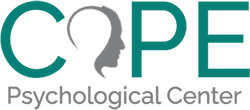5 Effective Couples Therapy Techniques
Relationships are journeys filled with highs and lows, but when the road gets rocky, it’s essential to have the tools to navigate through. Even new couples can benefit from interventions designed to strengthen their bond and foster healthy communication. Whether it’s learning to communicate better, building trust, letting go of resentments, or managing emotions, couples therapy techniques offer valuable resources to ensure relationships stay on track.
Recognizing the need for assistance in times of relationship distress can be the pivotal moment that saves a partnership. Seeking help through couples therapy demonstrates a commitment to growth and a willingness to overcome challenges together. With the right techniques and guidance, couples can embark on a journey towards deeper understanding and connection.
5 Effective Couples Therapy Techniques
Contrary to popular belief, not all therapy is the same. Couples have a variety of options when it comes to therapy techniques tailored to their specific needs and issues. Here are some common and effective couples therapy techniques:
1. Integrative Behavioral Couples Therapy
Integrative Behavioral Couples Therapy (IBCT) is a specialized form of therapy designed to address relationship issues by combining aspects of traditional behavioral therapy with acceptance-based strategies. Developed by Andrew Christensen and Neil S. Jacobson in the 1990s, IBCT operates on the premise that both acceptance and change are crucial in fostering healthy relationships.
At its core, IBCT focuses on helping couples understand and accept each other’s differences and limitations while also equipping them with the skills needed to enact positive changes in their relationship dynamics. Unlike some other forms of couples therapy that prioritize problem-solving and conflict resolution, IBCT places a strong emphasis on fostering emotional acceptance and empathy between partners.
The therapy process typically begins with an assessment phase where the therapist works with the couple to identify specific areas of conflict and dissatisfaction within the relationship. From there, the therapist guides the couple through various exercises and interventions aimed at improving communication, enhancing emotional expression, and promoting understanding.
One of the key techniques used in IBCT is known as the “softening start-up,” where partners learn to express their concerns and needs in a non-confrontational and empathetic manner. This approach helps to minimize defensiveness and encourages open dialogue between partners.
Another important aspect of IBCT is the cultivation of tolerance for relationship distress. Instead of viewing conflict as inherently negative, couples are encouraged to see it as an opportunity for growth and understanding. By learning to tolerate discomfort and uncertainty, couples can develop greater resilience and adaptability in the face of challenges.
2. Reflective Listening
Reflective listening serves as a cornerstone of effective communication within relationships. This technique creates a safe space for partners to express themselves freely while fostering understanding and empathy. By taking turns as active listeners, couples can enhance their communication skills and strengthen their bond.
Rephrasing statements using “I” phrases instead of “you” statements can lead to more productive conversations. For instance, expressing feelings with statements like “I feel hurt when you are late” facilitates open dialogue and minimizes defensiveness.
3. Emotion-Focused Therapy (EFT)
Emotion-focused therapy (EFT) is a valuable technique for couples seeking to address destructive patterns and enhance emotional intimacy. By identifying underlying emotions and attachment needs, partners can heal past wounds and strengthen their connection. According to the American Psychological Association (APA), EFT is effective for approximately 75% of couples who utilize it.
4. Solution-Focused Therapy
Solution-focused therapy is a dynamic approach that places emphasis on identifying clear objectives and implementing actionable strategies to address relationship challenges. Unlike traditional therapy, which may delve extensively into past issues, solution-focused therapy focuses primarily on the present and future.
In this approach, couples work collaboratively with their therapist to define specific goals they wish to achieve in their relationship. These goals are often tailored to address immediate concerns or areas of tension. By breaking down larger issues into smaller, manageable objectives, couples can approach problem-solving in a systematic and proactive manner.
For example, a couple struggling with communication issues may set a goal to improve their ability to express their feelings without escalating into arguments. To achieve this goal, they might implement strategies such as practicing active listening, using “I” statements, and scheduling regular check-ins to discuss concerns calmly and openly.
One of the key strengths of solution-focused therapy is its focus on strengths and resources within the relationship. Instead of dwelling on problems, couples are encouraged to identify instances when they have successfully overcome challenges in the past and apply similar strategies to current issues. This positive and empowering approach fosters a sense of hope and resilience, even in the face of adversity.
By concentrating on short-term objectives, solution-focused therapy helps couples experience tangible progress and results more quickly. Celebrating small victories along the way reinforces motivation and momentum, ultimately leading to long-term positive change in the relationship.
5. Gottman Method
The Gottman method is renowned for its practical and evidence-based approach to couples therapy, drawing from decades of research on relationship dynamics. Developed by Drs. John and Julie Gottman, this method equips couples with the tools and skills needed to navigate conflicts effectively and deepen emotional intimacy.
Central to the Gottman method is the concept of the “Sound Relationship House,” which comprises seven essential components of a healthy and thriving relationship. These components include building love maps, nurturing fondness and admiration, turning towards each other instead of away, managing conflict constructively, making life dreams come true, creating shared meaning, and trust and commitment.
During therapy sessions, couples learn specific techniques and exercises designed to strengthen each aspect of the Sound Relationship House. For example, they may practice “love mapping” exercises to deepen their understanding of each other’s inner world or engage in structured conversations to address areas of conflict constructively.
One of the unique features of the Gottman method is its emphasis on the role of friendship in romantic relationships. Couples learn how to cultivate friendship by engaging in activities that promote connection and mutual enjoyment. By prioritizing friendship and emotional support, couples build a solid foundation of trust and intimacy that enhances their overall relationship satisfaction.
While the Gottman method was initially developed for use in workshops, many therapists have adapted its techniques for private therapy sessions. This flexibility allows couples to receive personalized support and guidance tailored to their unique needs and circumstances. Whether addressing communication breakdowns or rebuilding trust after a betrayal, the Gottman method provides couples with practical tools to navigate challenges and foster a deeper understanding of each other.
Couples Therapy Techniques and Exercises to Try
In addition to therapy sessions, couples can reinforce their progress through various couple therapy techniques, exercises and activities:
- Identifying Feelings: Practice expressing emotions effectively in a safe space.
- Focusing on Solutions: Redirect negative behaviors and focus on positive outcomes.
- Exploring the Past: Address past traumas and unhealthy patterns to promote healing.
- Alignment: Reconnect with the positive aspects of your relationship to navigate challenges.
- Expressing Gratitude: Cultivate appreciation and mutual respect through regular expressions of gratitude.
- Identifying Love Languages: Understand each other’s love languages to deepen connection and intimacy.
- Penciling in Time Together: Prioritize quality time by scheduling regular dates or activities.
Finding a Couples Therapist
If you’re considering couples therapy or want to learn more couples therapy techniques, options like COPE Psychological Center offer convenient and flexible solutions. Whether you’re facing relationship challenges or striving to enhance satisfaction, couples therapy can provide invaluable support and guidance on your journey towards a healthier, happier partnership. Reach out today.

